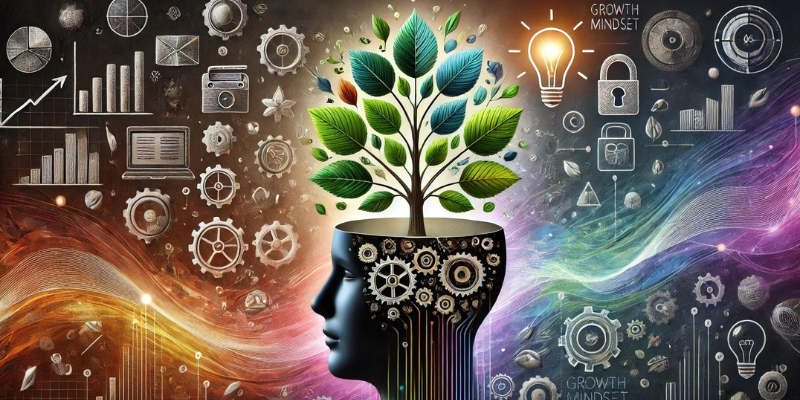In the contemporary workplace, employees can broadly be classified into two categories: average employees and great employees. This distinction is vital for organisational success and productivity. Understanding the attributes that differentiate great employees from their average counterparts can help businesses foster an environment that promotes excellence. This article delves into these characteristics, highlighting the differences and suggesting ways to cultivate a culture that nurtures great employees.
1.0 Average Employees
1.1 Lack of Motivation and Engagement
Average employees often come to work solely for the paycheck. Their primary motivation is financial, lacking the intrinsic drive to excel in their roles. This group typically shows no desire to learn new things or improve their skills, preferring to stick to familiar routines and tasks (Deci & Ryan, 1985). This lack of engagement and curiosity leads to stagnation, both personally and professionally.
1.2 Resistance to Change
Change is an inevitable part of any dynamic workplace. However, average employees tend to resist change, preferring the comfort of the status quo. This resistance can hinder organisational growth and adaptation in a rapidly evolving market (Kotter, 1996).
1.3 Poor Planning and Health Habits
Average employees often fail to plan their tasks effectively, leading to inefficiencies and missed deadlines. Additionally, they may have poor health habits, which can impact their overall productivity and morale (Cooper, Dewe, & O’Driscoll, 2001).
1.4 Blame Culture and Fear-Based Motivation
When things go wrong, average employees are quick to blame others or justify their failures instead of taking responsibility. Their motivation often stems from fear rather than a genuine desire to excel, which can create a toxic work environment (Kane-Urrabazo, 2006).
1.5 Lack of Contribution and Team Spirit
Average employees rarely contribute new ideas, sticking to the bare minimum required. They can be poor teammates and are often considered a drag to be around, negatively impacting team dynamics and overall morale (Edmondson, 1999).
2.0 Great Employees
2.1 Passion for Work and Continuous Learning
Great employees love doing great work and are intrinsically motivated. They find joy and satisfaction in their tasks, going above and beyond to achieve excellence. Additionally, they are constant learners, always seeking to acquire new skills and knowledge to stay ahead in their field (Kolb, 1984).
2.2 Embracing Change
Great employees embrace change and see it as an opportunity for growth and improvement. They are adaptable and open-minded, which helps organisations navigate through transitions smoothly (Heifetz, Grashow, & Linsky, 2009).
2.3 Strategic Planning and Health Consciousness
Planning for success is a hallmark of great employees. They set clear goals and work systematically towards achieving them. Furthermore, they maintain great health habits, understanding that physical well-being is closely linked to productivity and mental health (Cameron & Quinn, 2011).
2.4 Responsibility and Excellence
Taking responsibility for their actions is a key trait of great employees. They do not shy away from accountability and are motivated by a sense of excellence. This mindset fosters a culture of continuous improvement and high performance (Covey, 1989).
2.5 Contribution and Leadership
Great employees are idea machines, constantly contributing innovative solutions and improvements. They hate wasting time and are often seen as team leaders, inspiring and motivating their colleagues. Their positive attitude and fun-loving nature make them enjoyable to work with, enhancing team cohesion and productivity (Senge, 1990).
The distinction between average and great employees is stark. While average employees are characterised by a lack of motivation, resistance to change, poor planning, and a fear-based mindset, great employees are driven by passion, adaptability, strategic planning, and a commitment to excellence. Organisations aiming for success must strive to create an environment that nurtures and rewards the attributes of great employees. By doing so, they can ensure sustained growth, innovation, and a positive workplace culture.
References
Cameron, K. S., & Quinn, R. E. (2011) Diagnosing and Changing Organisational Culture: Based on the Competing Values Framework. John Wiley & Sons.
Cooper, C. L., Dewe, P. J., & O’Driscoll, M. P. (2001) Organisational Stress: A Review and Critique of Theory, Research, And Applications. Sage.
Covey, S. R. (1989) The 7 Habits Of Highly Effective People: Powerful Lessons In Personal Change. Simon and Schuster.
Deci, E. L., & Ryan, R. M. (1985) Intrinsic Motivation and Self-Determination in Human Behaviour. Springer Science & Business Media.
Edmondson, A. C. (1999) “Psychological Safety and Learning Behaviour in Work Teams”. Administrative Science Quarterly. 44(2), pp. 350-383.
Heifetz, R., Grashow, A., & Linsky, M. (2009) The Practice of Adaptive Leadership: Tools and Tactics for Changing Your Organisation and the World. Harvard Business Press.
Kane-Urrabazo, C. (2006) “Management’s Role in Shaping Organisational Culture”. Journal of Nursing Management. 14(3), pp. 188-194.
Kolb, D. A. (1984) Experiential Learning: Experience as the Source of Learning and Development. Prentice Hall.
Kotter, J. P. (1996) Leading Change. Harvard Business Review Press.
Senge, P. M. (1990) The Fifth Discipline: The Art and Practice of The Learning Organisation. Doubleday/Currency.













